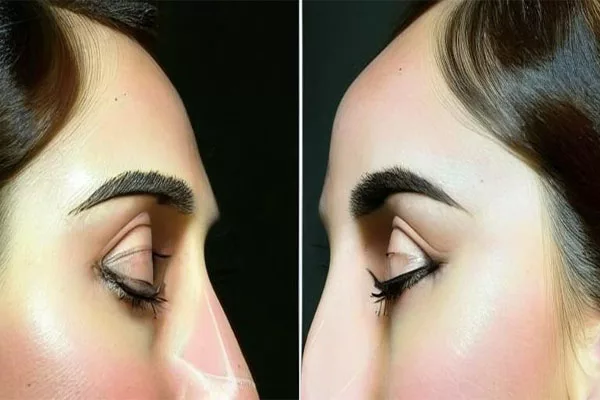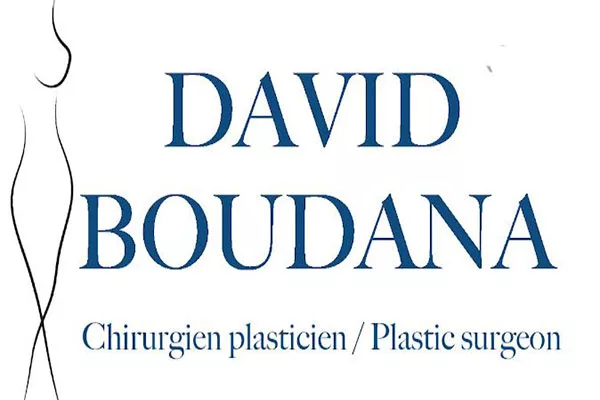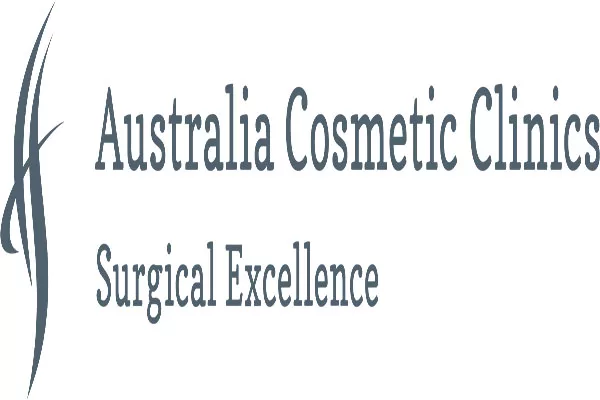Rhinoplasty (Nose Surgery)
Rhinoplasty, commonly known as nose surgery, is a cosmetic procedure that can change the appearance of the nose, improve breathing, or both. It is a procedure that has been around for many years and has become increasingly popular in recent years. Rhinoplasty can be done for both medical and cosmetic purposes.
Some key points about rhinoplasty:
- It can improve the overall appearance of the nose: Rhinoplasty can reshape the nose, reduce or increase its size, change the angle between the nose and upper lip, and correct any bumps, indentations, or other defects on the nose.
- It can improve breathing: In some cases, rhinoplasty can be used to correct breathing problems such as a deviated septum, which can cause obstruction in the nasal passages and make it difficult to breathe.
- It is a highly individualized procedure: Every patient is unique, and every nose is different. Rhinoplasty must be tailored to each individual patient to ensure the best possible outcome.
- It is a surgical procedure: Rhinoplasty is a surgical procedure that involves making incisions in the nose and reshaping the bone and cartilage to achieve the desired result.
- It requires recovery time: Patients will need to take some time off work or school to recover from the procedure. Bruising and swelling are normal in the days and weeks following rhinoplasty.
- It is important to choose a qualified surgeon: Rhinoplasty is a complex procedure that should only be performed by a board-certified plastic surgeon who has extensive experience with nose surgery.
- It can be combined with other procedures: Patients may choose to combine rhinoplasty with other procedures such as chin augmentation or facelift for a more comprehensive facial rejuvenation.
- It is important to have realistic expectations: While rhinoplasty can improve the overall appearance of the nose and correct breathing problems, patients should have realistic expectations for the outcome of the procedure.
- It has a high satisfaction rate: Most patients who undergo rhinoplasty are highly satisfied with the outcome of the procedure and report improved self-confidence and quality of life.
- It is important to follow all post-operative instructions: Patients must follow all post-operative instructions from their surgeon to ensure proper healing and to minimize the risk of complications.””There are two types of rhinoplasty: open and closed.
- Open rhinoplasty: In this approach, the surgeon makes a small incision on the skin between the nostrils, called the columella. This allows the surgeon to lift the skin and access the underlying bone and cartilage for reshaping. Open rhinoplasty is typically used for more complex procedures that require more extensive reshaping.
- Closed rhinoplasty: In this approach, all incisions are made inside the nostrils. The surgeon reshapes the bone and cartilage from within the nose, without lifting the skin. Closed rhinoplasty is often used for simpler procedures that require less reshaping.
The choice between open and closed rhinoplasty will depend on the individual patient and the specific goals of their procedure. The surgeon will discuss these options with the patient and recommend the most appropriate approach for their needs.
Candidates for rhinoplasty should have realistic expectations for the outcome of the procedure. They should also be in good overall health and have fully developed facial features.
Some common reasons why patients may consider rhinoplasty
- They are unhappy with the size or shape of their nose
- They have breathing problems due to a deviated septum or other nasal obstruction
- They have a congenital defect or injury that affects the appearance or function of their nose
- They want to achieve a more balanced or harmonious facial appearance
During the initial consultation, the surgeon will evaluate the patient’s nasal structure and discuss their goals for the procedure. The surgeon will also explain the risks and benefits of rhinoplasty and recommend the most appropriate treatment plan for the patient’s needs.
Before undergoing rhinoplasty, patients should prepare themselves for the procedure by following these steps:
- Choose a board-certified plastic surgeon who specializes in rhinoplasty.
- Schedule a consultation with the surgeon to discuss your goals and expectations for the procedure.
- Follow any pre-operative instructions provided by the surgeon, such as avoiding smoking and certain medications.
- Arrange for someone to drive you home after the procedure and to stay with you for the first few days of recovery.
- Plan to take time off work or school to rest and recover following the procedure.
- Prepare a recovery area at home with plenty of pillows and entertainment to keep you comfortable and occupied.
- Stock up on any supplies you may need during your recovery, such as ice packs, gauze, and pain medication.
- Follow all post-operative instructions provided by the surgeon, including restrictions on physical activity and proper wound care.
- Attend all follow-up appointments with the surgeon to ensure proper healing and to address any concerns.
- Be patient and gentle with yourself during the recovery process and allow your body time to heal and adjust.
The rhinoplasty procedure typically takes between 1-3 hours to complete, depending on the extent of the surgery.
Here is an overview of what to expect during the rhinoplasty procedure:
- Anesthesia: The surgeon will administer either general anesthesia or local anesthesia with sedation to ensure the patient’s comfort during the procedure.
- Incisions: The surgeon will make incisions either inside the nostrils or on the skin between the nostrils, depending on the type of rhinoplasty being performed.
- Reshaping: The surgeon will reshape the bone and cartilage of the nose to achieve the desired result. This may involve removing or adding tissue or using grafts to enhance the structure of the nose.
- Closing incisions: The surgeon will close the incisions with sutures and apply a splint or bandages to support the nose and promote proper healing.
- Recovery: Patients will spend some time in the recovery room before being discharged to go home. Patients should plan to have someone drive them home and stay with them for the first few days of recovery.
The surgeon will provide detailed instructions for post-operative care, including restrictions on physical activity, proper wound care, and medications to manage pain and swelling. Patients should follow these instructions carefully to ensure proper healing and minimize the risk of complications.
Some tips to help manage recovery after rhinoplasty:
After rhinoplasty, patients can expect some degree of bruising, swelling, and discomfort around the nose and eyes. These symptoms are normal and typically resolve within 1-2 weeks following the procedure.
1. Rest: It is important to get plenty of rest in the days following the procedure. Patients should avoid strenuous activity and bending over, as this can increase swelling and delay healing.
2. Apply ice: Using ice packs or frozen peas can help reduce swelling and discomfort in the first few days after surgery. Apply ice for 10-15 minutes at a time, several times a day.
3. Elevate the head: Keeping the head elevated can also help reduce swelling. Patients should sleep with their head elevated on several pillows for the first few nights after surgery.
4. Take medication: The surgeon may prescribe pain medication or antibiotics to manage discomfort and prevent infection. Patients should follow the prescribed regimen carefully.
5. Follow wound care instructions: The surgeon will provide instructions for proper wound care and removal of the splint or bandages. Patients should follow these instructions carefully to avoid complications and promote proper healing.
6. Attend follow-up appointments: Patients should attend all follow-up appointments with the surgeon to monitor healing and address any concerns.
7. Be patient: It takes time for the swelling and bruising to resolve and for the nose to fully heal and settle into its new shape. Patients should be patient and gentle with themselves during the recovery process.
Risks
As with any surgery, there are risks and potential complications associated with rhinoplasty. These risks include:
- Bleeding: Some bleeding is normal after rhinoplasty, but excessive bleeding can be a sign of a more serious problem that requires medical attention.
- Infection: While infection is rare, it can occur after any surgical procedure. Patients should monitor their incisions for signs of infection, such as redness, swelling, or discharge.
- Scarring: Rhinoplasty incisions are typically small and well-hidden, but in rare cases, scarring may be visible.
- Unsatisfactory results: Despite careful planning and execution of the procedure, some patients may be unhappy with the outcome of their rhinoplasty.
- Anesthesia risks: General anesthesia carries some risks, including allergic reactions, respiratory problems, and reactions to medications.
- Nasal obstruction: In rare cases, rhinoplasty can lead to nasal obstruction or breathing problems.
- Septal perforation: In rare cases, rhinoplasty can cause a hole in the septum, the structure that separates the nostrils.
The surgeon will discuss these risks and potential complications with the patient during the initial consultation and provide detailed instructions for post-operative care to minimize the risk of complications.
Cost
The cost of rhinoplasty can vary widely depending on the surgeon’s experience, the geographic location of the surgery, and the complexity of the procedure. On average, the cost of rhinoplasty in the United States is around $5,000 to $10,000.
Here are some factors that can affect the cost of rhinoplasty:
- Surgeon’s experience: A highly experienced plastic surgeon may charge more for their services.
- Geographical location: The cost of living and cost of medical services can vary widely depending on the region.
- Type of rhinoplasty: Open rhinoplasty is generally more complex and may cost more than closed rhinoplasty.
- Additional procedures: If the patient chooses to combine rhinoplasty with other procedures, the cost will be higher.
- Anesthesia fees: The type of anesthesia used can affect the overall cost of the procedure.
- Facility fees: The cost of the surgical facility and any additional services, such as nursing care, can affect the overall cost of the procedure.
Some insurance plans may cover part or all of the cost of rhinoplasty if it is deemed medically necessary, such as for the correction of breathing problems. Patients should check with their insurance company to determine coverage and out-of-pocket expenses.
Results
Rhinoplasty is a highly individualized procedure, and the results can vary depending on the patient’s anatomy, goals, and the surgeon’s skill and experience.
Here are some general expectations for the results of rhinoplasty:
- Improved appearance: Most patients are satisfied with the aesthetic results of their rhinoplasty, which typically include a more balanced and harmonious facial appearance. The nose may be smaller, smoother, and more symmetrical.
- Improved breathing: Patients who undergo rhinoplasty to correct breathing problems can expect to breathe more freely and easily following the procedure.
- Natural-looking results: A skilled plastic surgeon will aim to achieve a result that looks natural and proportionate to the patient’s other facial features.
- Realistic expectations: Patients should have realistic expectations for the outcome of their rhinoplasty. While the surgeon will work closely with the patient to achieve their desired result, there are limitations to what can be achieved through surgery.
It is important for patients to communicate their goals and concerns with their surgeon during the initial consultation to ensure a satisfactory outcome. Patients should also have a clear understanding of the risks and benefits of the procedure before making a decision to undergo rhinoplasty.
The results of rhinoplasty are typically long-lasting, but the nose can continue to change over time due to natural aging, injury, or other factors. Patients can help maintain the results of their rhinoplasty by:
- Avoiding trauma to the nose: Patients should take care to avoid any trauma or injury to the nose, as this can impact the result of the procedure.
- Wearing sunscreen: Sun damage can affect the appearance of the nose, so patients should protect their skin with sunscreen when spending time in the sun.
- Quitting smoking: Smoking can have a negative impact on healing and can increase the risk of complications after surgery.
- Maintaining a healthy lifestyle: Eating a healthy diet, exercising regularly, and managing stress can all help promote overall health and well-being, which can have a positive impact on the appearance of the nose.
- Following up with the surgeon: Patients should attend all scheduled follow-up appointments with the surgeon to monitor healing and address any concerns.
With proper care and maintenance, the results of rhinoplasty can last a lifetime.
References:
1. American Society of Plastic Surgeons. Rhinoplasty. https://www.plasticsurgery.org/cosmetic-procedures/rhinoplasty
2. Mayo Clinic. Rhinoplasty. https://www.mayoclinic.org/tests-procedures/rhinoplasty/about/pac-20384532
3. American Society for Aesthetic Plastic Surgery. Rhino. https://www.surgery.org/consumers/procedures/head/rhinoplasty
4. International Society of Aesthetic Plastic Surgery. Rhinoplasty. https://www.isaps.org/procedures/facial-plastic-surgery/rhinoplasty-nose-surgery/
5. MedlinePlus. Rhinoplasty. https://medlineplus.gov/ency/article/002979.htm
6. American Academy of Facial Plastic and Reconstructive Surgery. Rhinoplasty. https://www.aafprs.org/patient/procedures/rhinoplasty.html
7. WebMD. Rhinoplasty. https://www.webmd.com/beauty/cosmetic-procedures-rhinoplasty
8. The Rhinoplasty Society. About Rhinoplasty. https://www.rhinoplastysociety.org/about-rhinoplasty/
Melbourne Rhinoplasty
Rhino scars
Revision Rhinoplasty
Help 5 months post op and swelling
| This page is not advice and is intended to be informational only. Consult your physician before undertaking any surgical procedures. |
Most famous clinics
Marina Plastic Surgery
Dr. Grant Stevens
is the founder and Medical Director of Marina Plastic Surgery and The Institute; A Medical Spa in Marina Del Rey, California.
USA 4560 Admiralty Way Suite 256
Marina Del Rey, CA 90292
Phone : 310-494-2881
Nazarian Plastic Surgery
Dr. Sheila Nazarian
MMM is a Board Certified Plastic Surgeon and the founder of Nazarian Plastic Surgery and Spa26 in Beverly Hills.
USA 120 S. Spalding Dr. #315,
Beverly Hills, CA 90212
Phone: (310) 773-3039
Westlake Dermatology
Westlake Dermatology is a national leader in dermatology and plastic surgery. Our specialization in minimally invasive procedures.
USA 2201 Onion Creek Parkway
Austin, Texas 78747
Phone: 512-649-3376
Central Scottsdale Surgery Center
Dr. Remus Repta
Dr. Repta, our founder, is widely recognized for his exceptional skills, and the quality and artistry of his surgical work.
USA 3271 N Civic Center Plaza #105,
Scottsdale, AZ 85251
Phone:(855) 377-3782
Forest Hill Institute Of Aesthetic Plastic Surgery
Dr. David Boudana
Dr. David Boudana, a board certified plastic surgeon, is a graduate of the prestigious University of Paris Descartes.
Сanada 1188B Eglinton Avenue West
Toronto, Ontario
Phone:(416)785-7864
Australian Cosmetic Clinics
Dr. Shaz Musavi
Dr Shaz is a fully trained Cosmetic Surgeon who brings his extensive aesthetic background and professionalism.
Australia Suite 1, 448 Pacific Highway
Artarmon, NSW 2064
Phone: 1300 559 848











